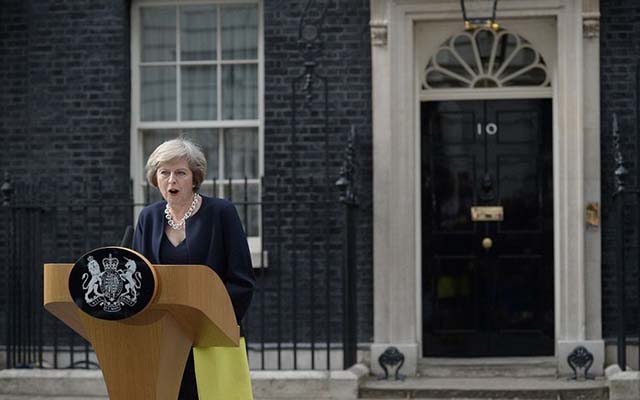Fake messages, the power to misrepresent


The need for authentication of information in the age of social media cannot be overemphasised as misinformation has the potential to cause social upheaval, panic and confusion
Delta Milayo Ndou #DigitalDialogue
It is quite simply irresponsible to deliberately mislead, but on social media platforms the most basic standards of truth telling and truth seeking are rarely adhered to.
Categorical rejection and scepticism were the major social media reactions to screenshots of an incriminating WhatsApp conversation ostensibly between Pastor Evan Mawarire of the #ThisFlag movement and an unidentified individual that circulated yesterday. In the rather stilted WhatsApp dialogue, Pastor Mawarire appears to admit to being an opportunist who is merely using the #ThisFlag movement to line his own pockets and carve a self-aggrandising niche for himself in a highly competitive ‘propheteering’ market wherein the gospel is an entrepreneurial endeavour.
My first reaction to the screenshots was cynicism because it seemed too contrived and the coincidence of these WhatsApp chats ‘leaking’ at the same time as his arrest was too much to overlook. However, those screenshots have some value in terms of forcing social media users to confront the issue of authenticity as well as the integrity (or lack thereof) of online information. Verification of information is a journalistic principle and standard that some journalists have failed to adhere to in the Internet age and a lot has been written about this subject.
What I would like to remark upon with regards to the reaction of many social media users to the Mawarire screenshots is the agency of users to verify information for themselves and their willingness to disbelieve ‘proof’ or take it at face value just because it looks authentic.
Screenshots have often been viewed as almost incontrovertible proof because many people are unaware of how easy it is to manipulate electronic information. Eagle-eyed and savvy users noted obvious discrepancies — the time reflected, as that of the device didn’t match the time of the final message in the chat suggesting that the screenshot somehow managed miraculously to ‘update’ itself. The screenshot indicated that the time on the device’s clock was 2333hrs and yet the last message captured was sent at 2352hrs — how did the device’s clock capture a message that was sent 19 minutes in later? The responses of a few cheeky users was to immediately start generating absurd fake chats that appeared legitimate to demonstrate the ease with which one can create a fake message and automatically wield the power to misrepresent and misinform. Fake chat messages impersonating Justin Bieber, Bill Gates, Barack Obama and even Donald Trump commenting on Zimbabwe were shared as a way of discrediting and ridiculing the Mawarire screenshots.
It is not so easy to pull the wool over the eyes of savvy social media users, but to a larger extent, it is frightfully easy to fool those who aren’t tech savvy especially with the variety of digital tools available that can be deployed towards mischievous ends.
Fake message apps and manipulation of truth
It is extremely easy for one to find and download free apps that are designed to generate fake conversations by simulating any social media platform or WhatsApp chats. The intention of these apps, apparently, is to allow the user to prank other users online by pretending to be engaged in conversations with famous people however, those same apps do come in handy for causing chaos. The apps are so detailed in simulating the appearance of the respective social media platforms or WhatsApp and even enable a user to select the type of device they want their fake message to appear from so as to match the gadget of the person who is being targeted/incriminated.
The amount of damage that can be caused by these types of apps, especially in a context where tabloids love to publish WhatsApp chats, can be staggering. Clearly verification is key and perhaps the principles that obtain regarding the admissibility of electronic evidence in courts of law should be applied by media entities as part of authenticating digital information. If those Mawarire screenshots could be grounds for prosecution, the issue of veracity would be central to admitting those screenshots as evidence in a court of law. As it so happens, there is an ongoing stakeholder consultative workshop on electronic evidence and ICT being convened by the Law Development Commission (LDC), which has been working towards the development of law on the admissibility of electronic evidence and use of ICT in courts.
It is very problematic that our laws are often outpaced by technologies so attempts to align our laws with the digitally influenced realities of the digital age are commendable.
Testing the integrity of online information relies on several factors including; the availability of other evidence to corroborate the digital content, the accuracy of the information and the manner in which its originator was/is identified.
Admittedly, in the fast-paced and frenzied world of social media, very few individuals take the time to test the integrity of the information they encounter, but instead rush to share and distribute it in order to be ‘first with the juicy news’.
This is what makes the reaction to the Mawarire screenshots interesting — the fact that users took it upon themselves to test and question the integrity of those WhatsApp chats; very few people are afforded this presumption of innocence once incriminating screenshots are linked to them. If nothing else, this incident stresses the need for vigilance in terms of what information we believe online and the credibility of those who originate it.
Accountability in the age of anonymity and pseudonymity
Closely linked to the generation and spreading of false content on social media is the prevalence of individuals hiding behind anonymous and pseudonymous personas who are hard to track and even harder to hold to account for any harmful content they might generate. While there are those with legitimate concerns around their privacy and security, which lead them to opt for anonymity and pseudonymity online, some users are driven by sinister motives to hide their identity in order to engage in uncouth activities with impunity and without repercussion.
The need for authentication of information in the age of social media cannot be overemphasised as misinformation has the potential to cause social upheaval, panic and confusion. It is quite simply irresponsible to deliberately mislead, but on social media platforms the most basic standards of truth telling and truth seeking are rarely adhered to. Information is shared so swiftly and sometimes goes viral while fact checking is regarded as a hindrance. Some social media users have been left with egg on their face after other savvy and vigilant users noted that they were using images from other countries to represent scenarios obtaining in Zimbabwe.
The need to communicate our lived experiences should also include the desire to communicate those lived experiences as truthfully as possible because once one is caught in a lie — the message gets tainted. If one needs to be anonymous online in order to protect themselves, that is fine and they are well within their rights.
However, all users would do best to abide by the dictum primum non nocere — first, do no harm.
In our online conduct we must consider the harm that our content or the content we share and distribute can cause to others, especially if the content is unverified and is of an incriminating nature.
Delta is Head of Digital at Zimpapers and a PhD scholar researching on digital media, disruptive technologies and journalistic practice. Follow her on Twitter: @deltandou










Comments